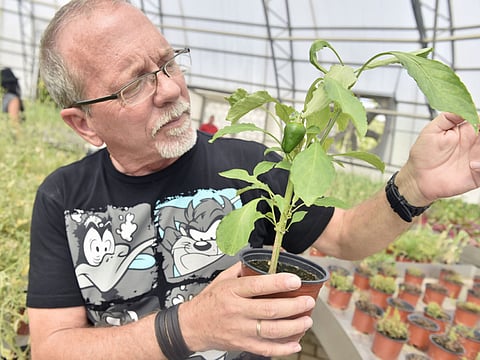Inside The Sustainable City in Dubai
Unique development in the UAE charges no service fee to its residents

Dubai: Have you heard of a freehold residential community in the UAE where residents enjoy a healthy, eco-friendly lifestyle without paying even a dime as service fees?
Welcome to The Sustainable City (TSC).
The 500-villa development located next to Dubai Studio City is a shining example of reducing ecological footprint, protecting the environment and increasing community wellbeing.
Here are some key features of the neighbourhood.
Urban farming
Community bonding. Residents of The Sustainable City during a community event. The development which boasts an eco-friendly lifestyle is located next to Dubai Studio City and comprises 500 villas. Photo: Clint Egbert/XPRESS
As part of the newly-launched Urban Farming Club, residents are given raised garden beds to grow their own herbs, veggies and fruits. “The idea is to make agriculture an integral part of urban life. We just need to pay Dh100 for the garden bed,” said Michael Solvsten who lives here.
Low power consumption
Residents don’t have to worry about high utility bills as each house produces between 25 and 30 kilowatts of power per hour thanks to solar panels, thick insulated walls and glazed windows. “We are not entirely dependent on Dewa (Dubai Electricity and Water Authority) as we generate our own power,” said a resident.
Aqueous Zone
TSC residents use ‘Aqueous Ozone’ – a sustainable natural oxidiser that is up to 50 times more effective than common household bleach and leaves no harmful residue or vapour. Adriennne Doolan who is behind the toxic-free alternative said they have installed liquid ozone dispensing machines in the area so that residents can collect the solution and use it for cleaning and washing purposes.
Community app
Sharing can not only keep tons of trash out of landfills, it can save us tons of money. This explains why residents here use the Peerby app which reduces consumerism by enabling people to borrow things from the neighbourhood.
Equestrian centre
As part of a social sustainability feature, developers Diamond Developers have set up an equestrian club including a horse training track at TSC. The club offers free horse-riding classes to children besides ‘trail rides’ along a four-kilometre sand track. “Pony rides and carriage services for parties are also offered,” said Kamal Basha, equestrian supervisor at the club.
Power generating gym
Smart city. A resident of The Sustainable City shows the Peerby community app. Right: The power-generating gym at the development. Photo: Clint Egbert/XPRESS
The treadmills and cycling machines at the gymnasium here are one of a kind as they produce power every time they are used. Those working out on these machines can see the power generated by them on a big screen.
“We generate around 6,000 watts of power per hour, which is enough to light a bulb for 1,900 hours,” said a resident.
Weather station
A weather station gives daily updates of the weather so residents get an idea of what their power consumption is going to be for the day.
The weather station is also part of on-going research being conducted by a group of universities in the USA.
Sustainable mosque
The mosque in the development accommodates up to 700 worshippers and has been designed to minimise energy and water consumption. It is well insulated to prevent thermal heat and is cooled using high-efficiency AC systems. The mosque is also fitted with LED lighting.
Self-sufficient plaza
The Plaza is a 15,000-square-metre mixed-use area comprising five low-rise blocks with shops, restaurants, cafes, offices and apartments. All the retail outlets here are self-sufficient and have a steady income which takes care of their maintenance and operations. So residents do not have to pay anything as service fees.
Boomerang bags
A bagful of smiles. Sustainable City residents with the Boomerang Bags they have created out of used fabric. Photo: Clint Egbert/XPRESS
Inspired by the theme of the neighbourhood, residents have launched a project called Boomerang Bags to help reduce plastic consumption in the development. A group of residents has been creating shopping bags out of used fabric as part the project, which is a brainchild of Mette Vraav.
“Living in The Sustainable City, you are encouraged to come up with sustainable initiatives. Our aim is to make Boomerang Bags and place them in the supermarket so that they could be used by residents,” Vraav says.
Sign up for the Daily Briefing
Get the latest news and updates straight to your inbox



